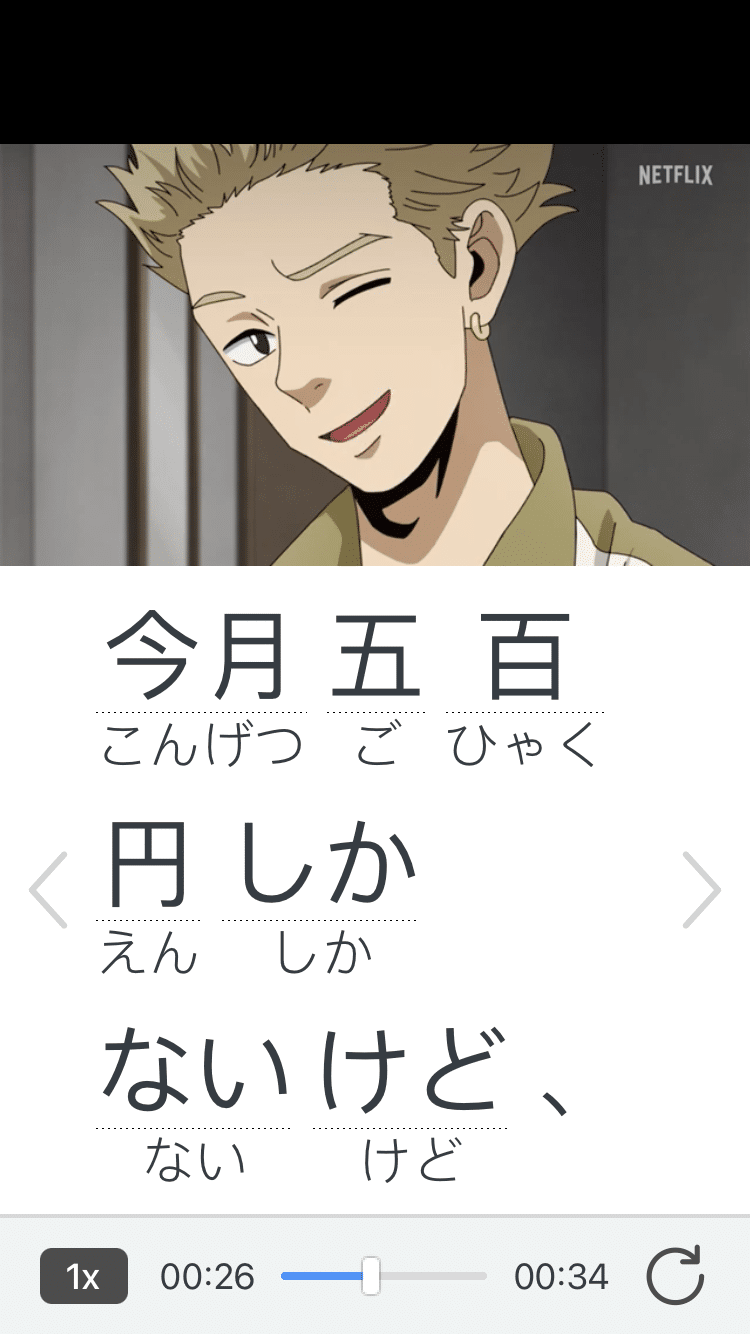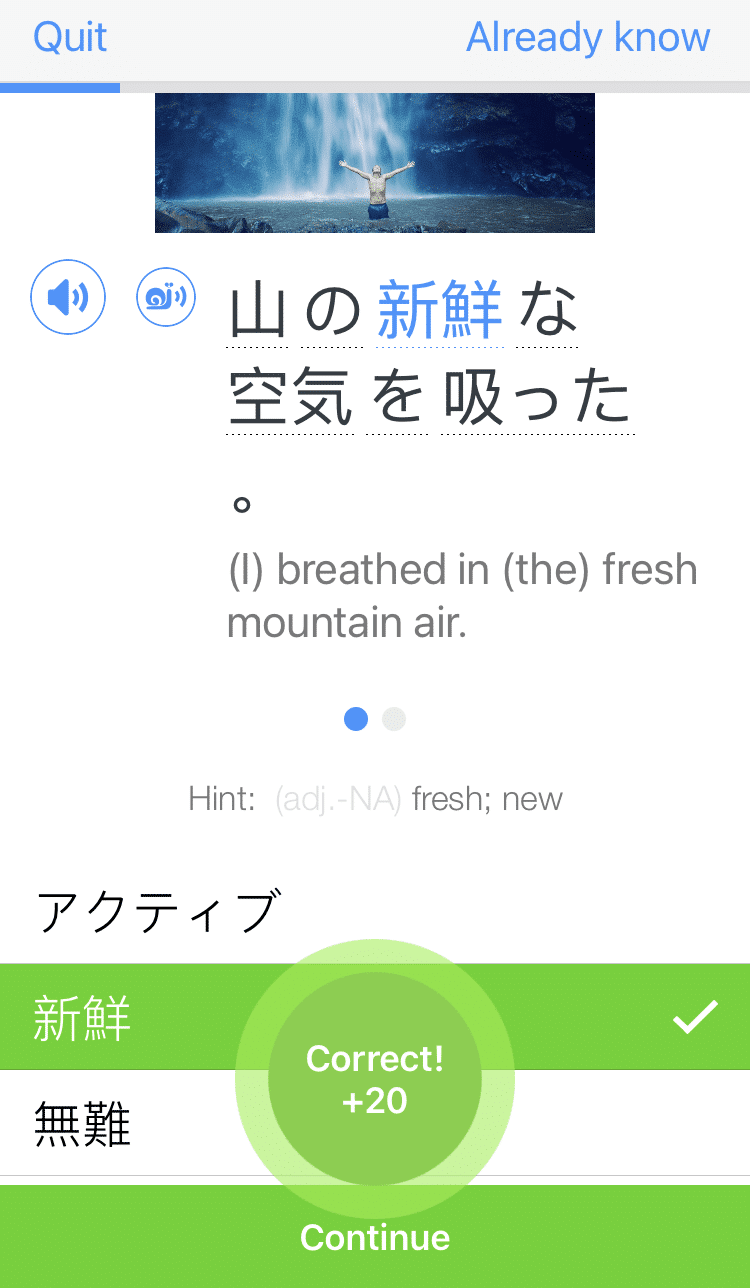40 Words for Body Parts in Japanese (with PDF Download)

We talk about our bodies constantly—in fact, we even ask each other how we’re feeling as a common greeting.
This is true for many languages, including Japanese.
As a Japanese learner, you’ll need to learn a thing or two about body vocabulary because they pop up everywhere.
Let’s get to know 40 essential words for body parts in Japanese.
Contents
- Body Parts in Japanese
- 1. 顔 (かお) — Face
- 2. 髪 (かみ) — Hair
- 3. 頭 (あたま) — Head
- 4. 足 (あし) — Foot or leg
- 5. 鼻 (はな) — Nose
- 6. 口 (くち) — Mouth
- 7. 唇 (くちびる) — Lips
- 8. 歯 (は) — Teeth
- 9. 指 (ゆび) — Finger
- 10. 舌 (した) — Tongue
- 11. 耳 (みみ) — Ear
- 12. 額 (ひたい) — Forehead
- 13. 眉 (まゆ) — Eyebrow
- 14. 目 (め) — Eye
- 15. 胸 (むね) — Chest
- 16. 腹 (はら)/お腹 (おなか) — Gut or stomach
- 17. 腰 (こし) — Waist or hips
- 18. 太股 (ふともも) — Thigh
- 19. 膝 (ひざ) — Knee
- 20. 背中 (せなか) — Back
- 21. 首 (くび) — Neck
- 22. 腕 (うで) — Arm
- 23. 肘 (ひじ) — Elbow
- 24. 手 (て) — Hand
- Other Body Words
- Organs
- Why Learn Body Parts in Japanese?
- And One More Thing...
Download: This blog post is available as a convenient and portable PDF that you can take anywhere. Click here to get a copy. (Download)
Body Parts in Japanese

1. 顔 (かお) — Face
彼女の顔は美しい。 (かのじょ の かお は うつくしい。) — Her face is beautiful.
2. 髪 (かみ) — Hair
Fun fact: Hair and wigs have a substantial role in Japanese pop culture.
私の髪はとても長いです。 (わたし の かみ は とても ながい です。) — My hair is very long.
3. 頭 (あたま) — Head
その赤ちゃんの頭は大きい。 (その あかちゃん の あたま は おおきい。) — That baby has a huge head.
4. 足 (あし) — Foot or leg
クモは足が八本あります。 (くも は あし が はっぽん あります。) — Spiders have eight legs.
5. 鼻 (はな) — Nose
Fun fact: In a lot of anime and manga, front-facing characters don’t have any nostrils.
鼻は匂うために使われます。 (はな は におう ため に つかわれます。) — The nose is used for smell.
6. 口 (くち) — Mouth
あなたの口は大きい! (あなた の くち は おおきい!) — You have a big mouth!
7. 唇 (くちびる) — Lips
アンジェリーナ・ジョリーの唇は厚い。 (あんじぇりーな・じょりー の くちびる は あつい。) — Angelina Jolie has big lips.
8. 歯 (は) — Teeth
ついに彼女は子供の歯が抜けた。 (ついに かのじょ は こども の は が ぬけた。) — She finally lost her baby teeth.
9. 指 (ゆび) — Finger
人間には十本の指があります。 (にんげん には じゅっぽん の ゆび が あります。) — Humans have 10 fingers.
10. 舌 (した) — Tongue
牛の舌はそれほど不味くない! (うし の した は それ ほど まずく ない!) — Cow’s tongue is not that bad!
11. 耳 (みみ) — Ear
耳鳴りがしている。 (みみなり が している。) — My ears are ringing.
12. 額 (ひたい) — Forehead
あなたの額は熱いです。熱がありますか? (あなた の ひたい は あつい です。ねつ が あります か?) — Your forehead is warm. Do you have a fever?
13. 眉 (まゆ) — Eyebrow
あなたは眉を動かせますか? (あなた は まゆ を うごかせます か?) — Can you wiggle your eyebrows?
14. 目 (め) — Eye
目は心の窓です。 (め は こころ の まど です。) — The eyes are the window to the soul.
15. 胸 (むね) — Chest
胸が重苦しい感じがする。 (むね が おもくるしい かんじ が する。) — My chest feels heavy.
16. 腹 (はら)/お腹 (おなか) — Gut or stomach
お腹が痛い。 (おなか が いたい。) — My stomach hurts.
17. 腰 (こし) — Waist or hips
彼女は腰が悪いです。 (かのじょ は こし が わるい です。) — She has a hip problem.
18. 太股 (ふともも) — Thigh
彼の太腿はとても太い。 (かれ の ふともも は とても ふとい。) — His thighs are very thick.
19. 膝 (ひざ) — Knee
膝がガクガクする。 (ひざ が がくがく する。) — My knees tremble.
20. 背中 (せなか) — Back
背中が痒い。 (せなか が かゆい。) — My back itches.
21. 首 (くび) — Neck
Fun fact: The neck was traditionally seen as a very erotic body part in Japan, mostly because it was the only body part (other than the face and hands) left uncovered by a kimono.
ろくろ首の首はとても長い。 (ろくろ くび の くび は とても ながい。) — Rokurokubi have very long necks.
22. 腕 (うで) — Arm
あなたの腕は短い。 (あなた の うで は みじかい。) — You have short arms.
23. 肘 (ひじ) — Elbow
テニス肘は厄介だ! (てにす ひじ は やっかい だ!) — Tennis elbow is such a pain!
24. 手 (て) — Hand
手が冷たい。 (て が つめたい。) — My hands are cold.
Other Body Words
25. 体 (からだ) — The body
私の体は健康です。 (わたし の からだ は けんこう です。) — I have a healthy body.
26. 骨 (ほね) — Bones
Morbid fact: 骨上げ (こつあげ) — kotsuage is the act of picking bones out of a cremation chamber with chopsticks.
骨にはカルシウムが必要です。 (ほね に は かるしうむ が ひつよう です。) — Your bones need calcium.
27. 血管 (けっかん) — Blood vessels
血管は器官に血液を運ぶ。 (けっかん は きかん に けつえき を はこぶ。) — Blood vessels carry blood to the organs.
28. 脂肪 (しぼう) — Fat cells
脂肪は高コレステロールを引き起こす可能性があります。 (しぼう は こう これすとろーる を ひきおこす かのうせい が あります。) — Fat cells can cause high cholesterol.
29. 筋肉 (きんにく) — Muscle
彼の筋肉は大きい。 (かれ の きんにく は おおきい。) — He has big muscles.
30. 肌 (はだ) — Skin
あなたの肌はとても綺麗です。 (あなた の はだ は とても きれい です。) — Your skin is flawless.
Organs
31. 肺 (はい) — Lung
ヘビは大きな肺と小さな肺を持っています。 (へび は おおきな はい と ちいさな はい を もって います。) — Snakes have a big lung and a small lung.
32. 胆嚢 (たんのう) — Gallbladder
胆嚢癌は日本人に多い。 (たんのう がん は にほんじん に おおい。) — Many Japanese people have gallbladder cancer.
33. 膵臓 (すいぞう) — Pancreas
膵臓は血糖を調節します。 (すいぞう は けっとう を ちょうせつ します。) — The pancreas regulates blood sugar.
34. 脳 (のう) — Brain
Fun fact: Japanese doctors discovered that regular “brain exercise” like art, writing, reading, games and arithmetic, is considered a fantastic treatment for adults with dementia and other brain disorders.
Many other countries are now using this same treatment in hospitals and assisted living facilities. The brain is pretty amazing!
クラゲには脳がありません。 (くらげ に は のう が ありません。) — Jellyfish do not have a brain.
35. 肝臓 (かんぞう) — Liver
肝臓はタンパク質を作ります。 (かんぞう は たんぱくしつ を つくります。) — The liver creates proteins.
36. 腎臓 (じんぞう) — Kidneys
Not-so-fun fact: Kidney transplants, as well as most other types of organ transplants, are actually very difficult to get in Japan because of religious and political roadblocks.
私は新しい腎臓が必要です。 (わたし は あたらしい じんぞう が ひつよう です。) — I need a new kidney.
37. 腸 (ちょう) — Intestines
小腸はとても長い。 (しょうちょう は とても ながい。) — The small intestine is very long.
38. 虫垂 (ちゅうすい) — The appendix
人間の虫垂は役に立たない。 (にんげん の ちゅうすい は やく に たたない。) — The human appendix is useless.
39. 心臓 (しんぞう) — Heart
心臓の病気があります。 (しんぞう の びょうき が あります。) — I have a heart disease.
40. 胃 (い) — Stomach
胃の調子が良くない。 (い の ちょうし が よくない。) — My stomach is not well.
Why Learn Body Parts in Japanese?
Here are some more reasons why body parts should be in every Japanese learner’s vocabulary arsenal.
- We describe parts of our body often. Think about it! We talk about our bodies when something hurts (“I have a headache”), when we’re feeling good (“I have butterflies in my stomach!”), when we’re feeling sick (“…Ugh. My stomach.”) and everything in between.
We talk about what our body’s doing and what it feels like… a lot. That’s why knowing the body parts in Japanese will help you in your everyday life! Learning some Japanese medical terms will also come in handy.
- Bulking up your vocabulary knowledge will get you closer to fluency in Japanese. And like we said, these are definitely terms worth knowing.
- Challenging words involving body parts often show up in JLPT exams. If you plan on taking any level of the Japanese Language Proficiency test, there’s a chance that some of these words will pop up.
- If you want to study abroad in Japan for a medical field, knowing the lingo in Japanese will make your life a bit easier. College students who are studying to become doctors or nurses will need to know some terminology.
- Moving to Japan for another reason? It’s still good to know how to explain an emergency medical situation to someone, such as a broken leg or another injury that requires medical attention as soon as possible.
Now that you’re convinced you need to learn body part vocabulary in Japanese, take it a step further and practice everything we’ve just learned by seeing how it works in context, as applied to everyday speech. Add some Japanese medical dramas to your watch list, or if you prefer more interactive learning, immersive language learning programs like FluentU are great resources for learning body and health-related vocab (along with other common words and expressions).
FluentU takes authentic videos—like music videos, movie trailers, news and inspiring talks—and turns them into personalized language learning lessons.
You can try FluentU for free for 2 weeks. Check out the website or download the iOS app or Android app.
P.S. Click here to take advantage of our current sale! (Expires at the end of this month.)

All in all, that’s quite a lot of body words!
While terms like “the appendix” and “blood vessels” may not come up consistently at your host family’s dinner table, you might need to know some of these words in the future for medical reasons, especially if you plan on living in Japan.
So learn them all, or pick and choose the ones you’re most likely to need to know. However you use this list, good luck and happy studying!
And One More Thing...
If you love learning Japanese with authentic materials, then I should also tell you more about FluentU.
FluentU naturally and gradually eases you into learning Japanese language and culture. You'll learn real Japanese as it's spoken in real life.
FluentU has a broad range of contemporary videos as you'll see below:

FluentU makes these native Japanese videos approachable through interactive transcripts. Tap on any word to look it up instantly.

All definitions have multiple examples, and they're written for Japanese learners like you. Tap to add words you'd like to review to a vocab list.

And FluentU has a learn mode which turns every video into a language learning lesson. You can always swipe left or right to see more examples.

The best part? FluentU keeps track of your vocabulary, and gives you extra practice with difficult words. It'll even remind you when it’s time to review what you’ve learned. You'll have a 100% personalized experience.
Start using the FluentU website on your computer or tablet or, better yet, download the FluentU app from the iTunes or Google Play store. Click here to take advantage of our current sale! (Expires at the end of this month.)







